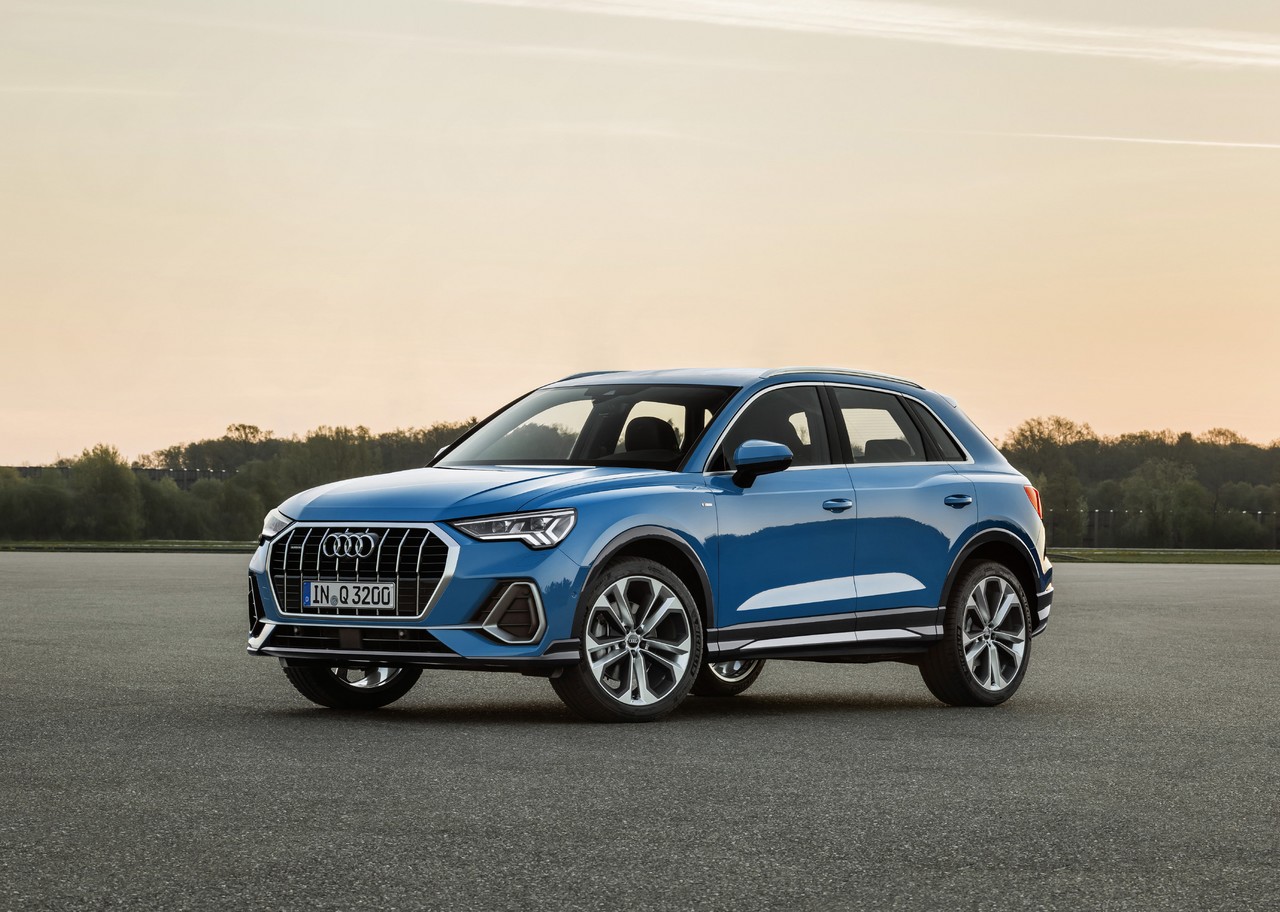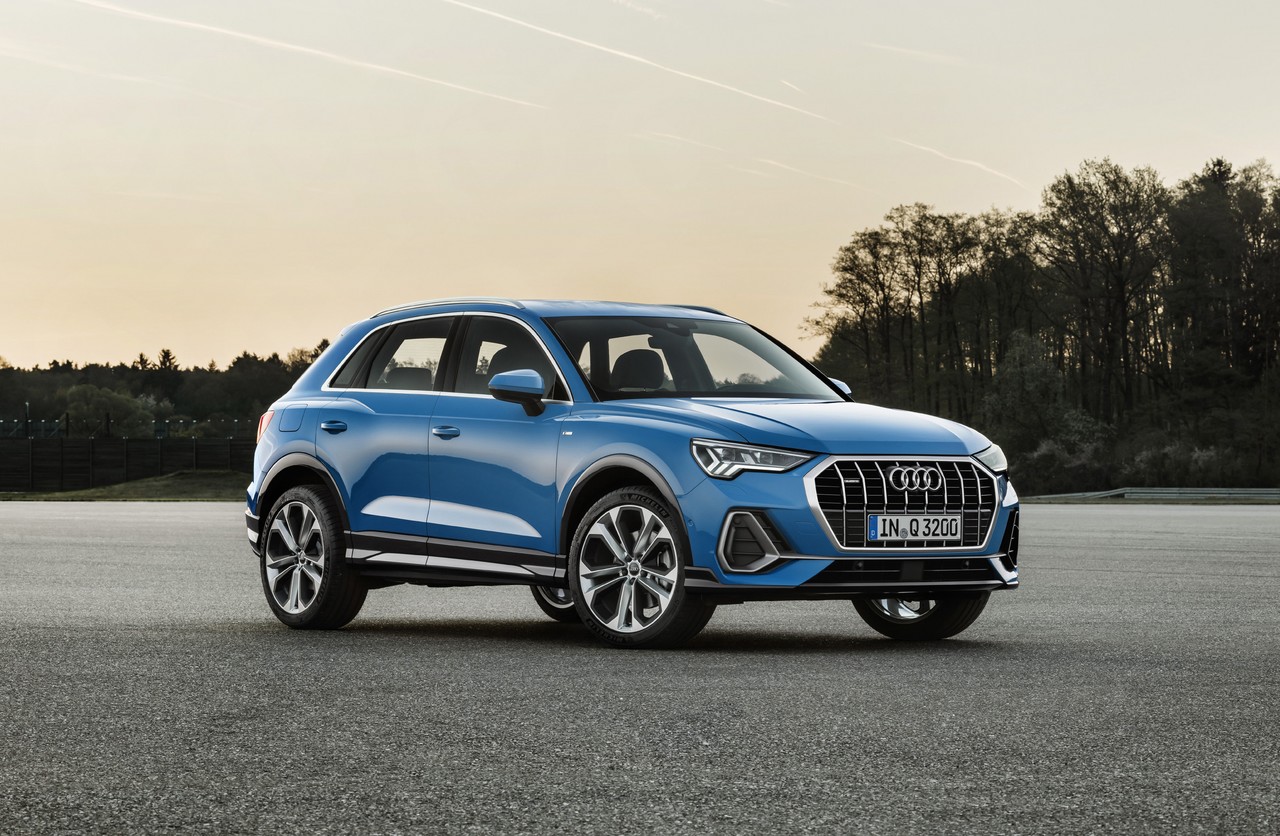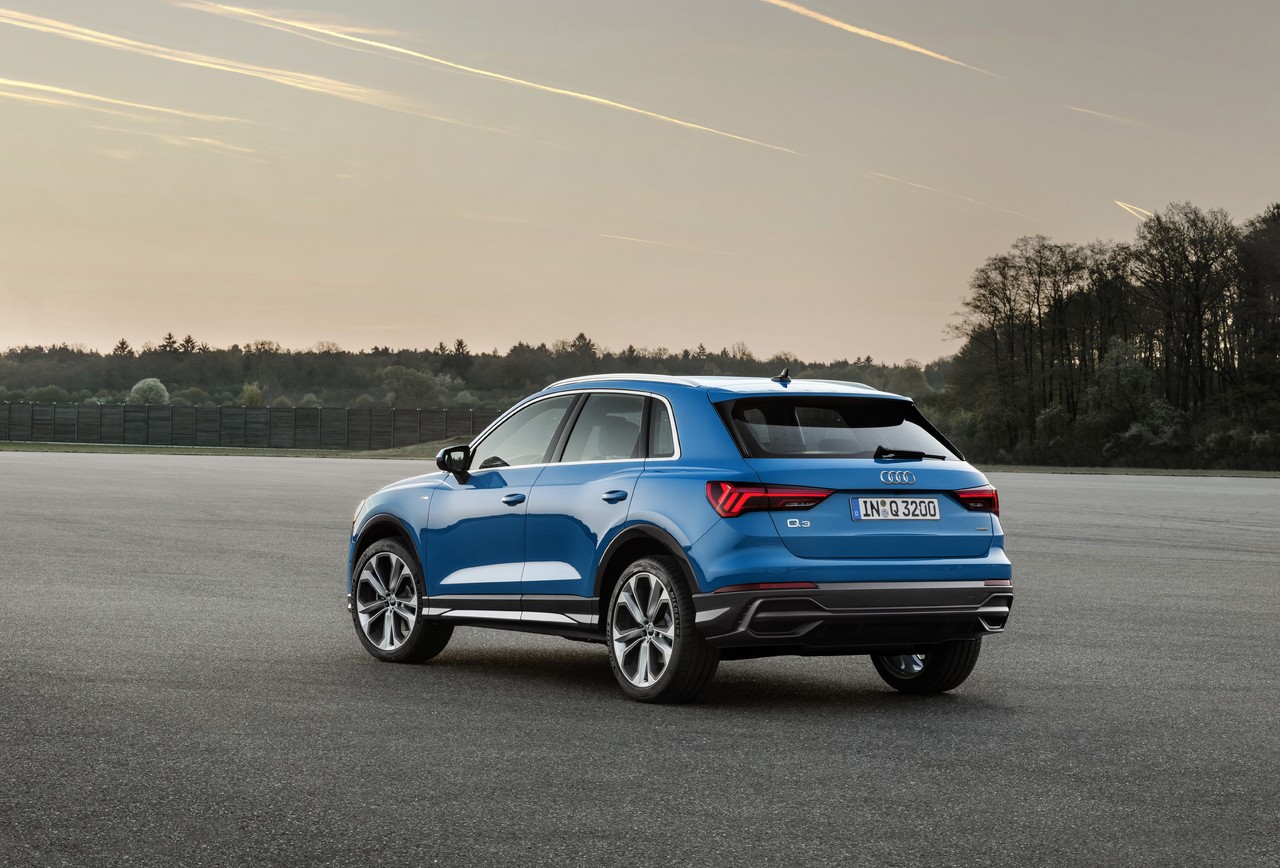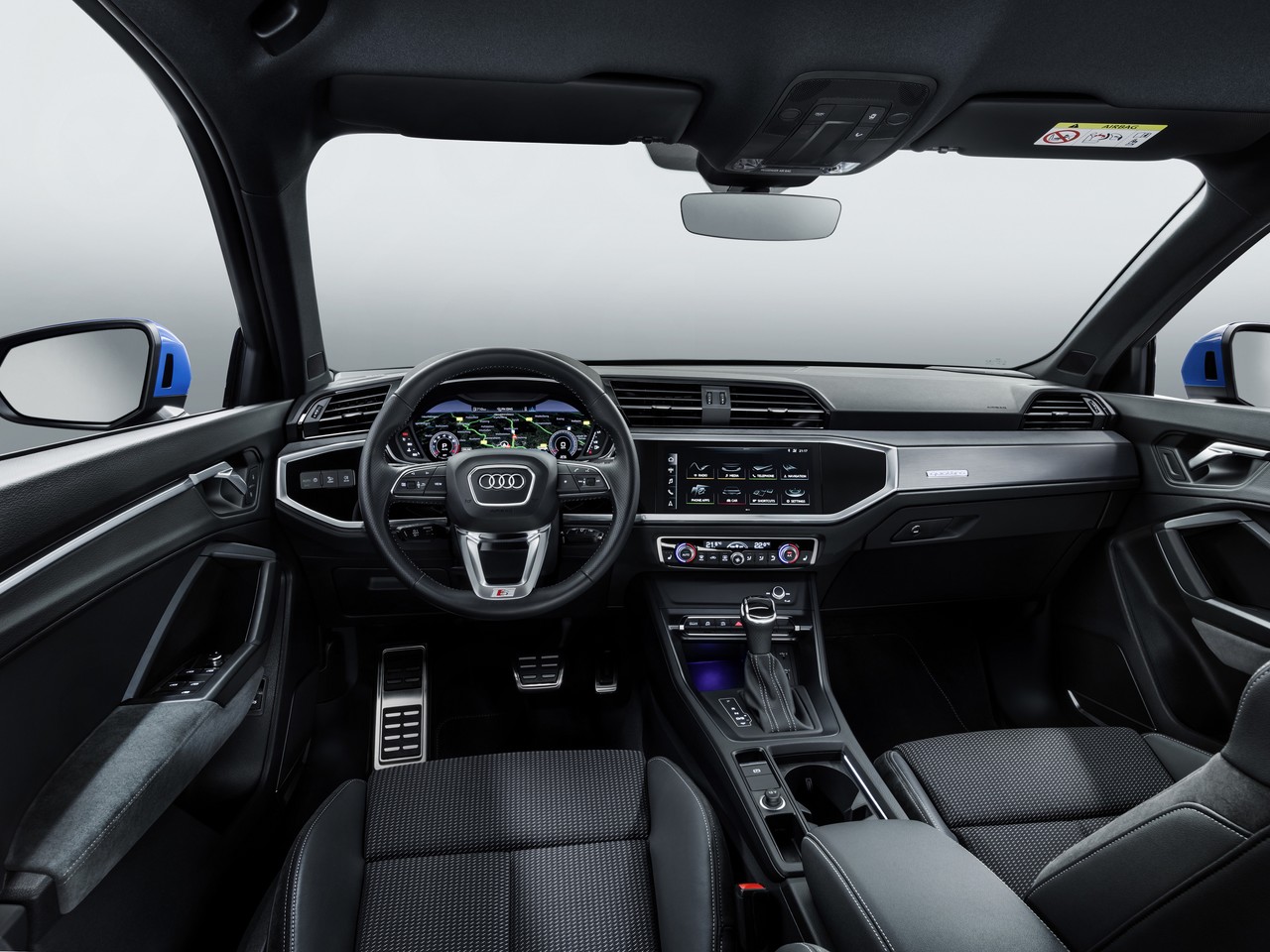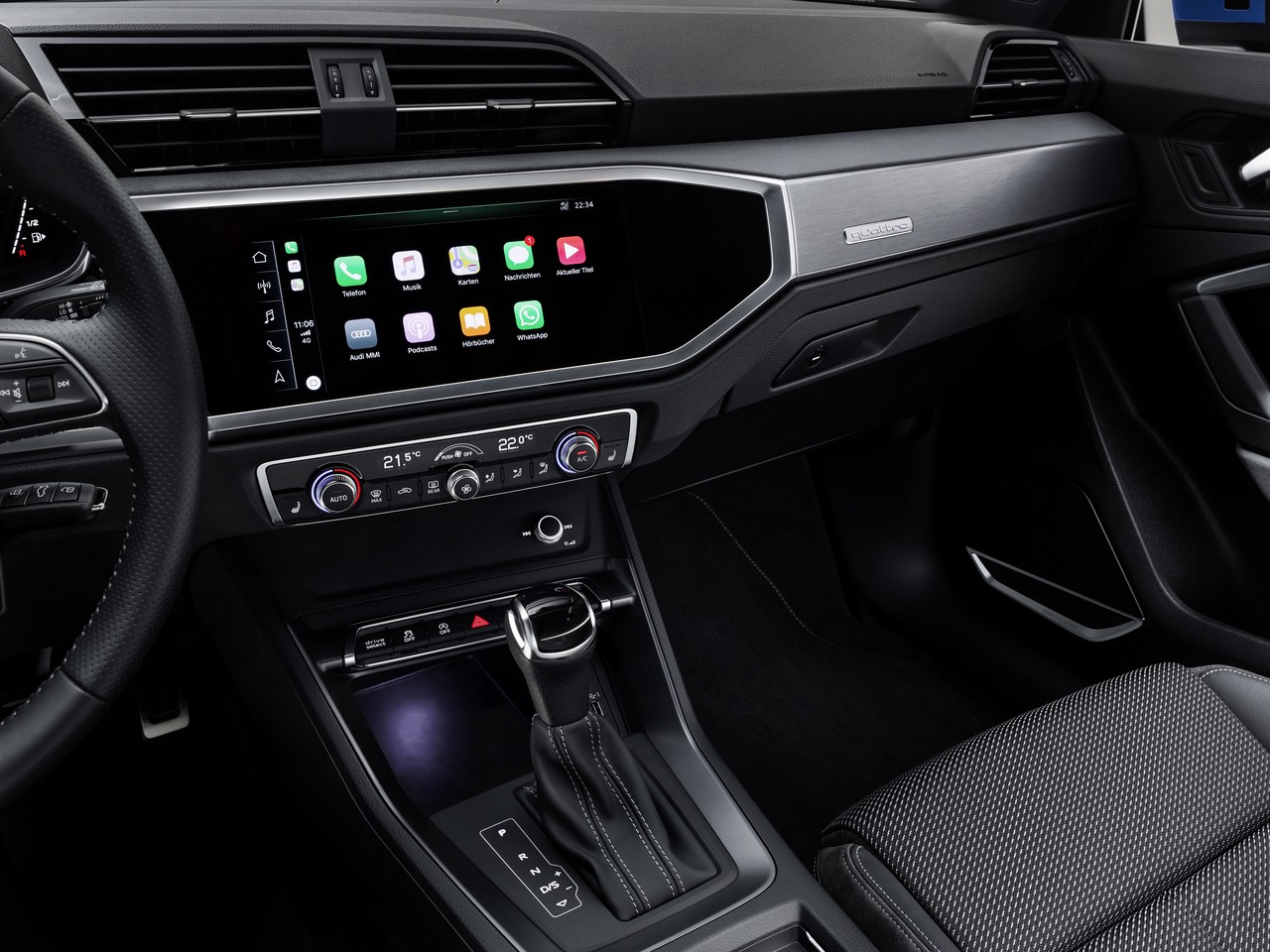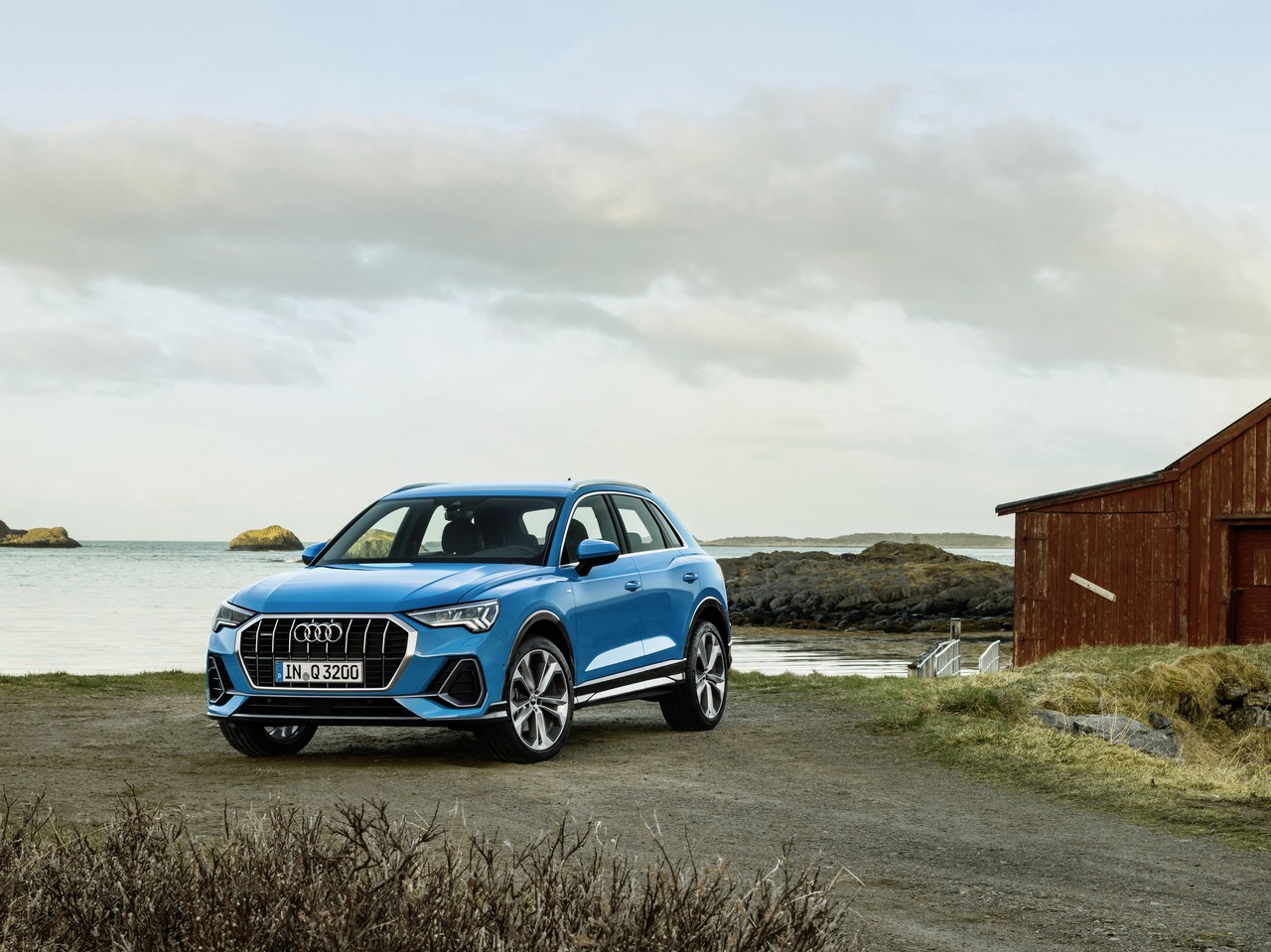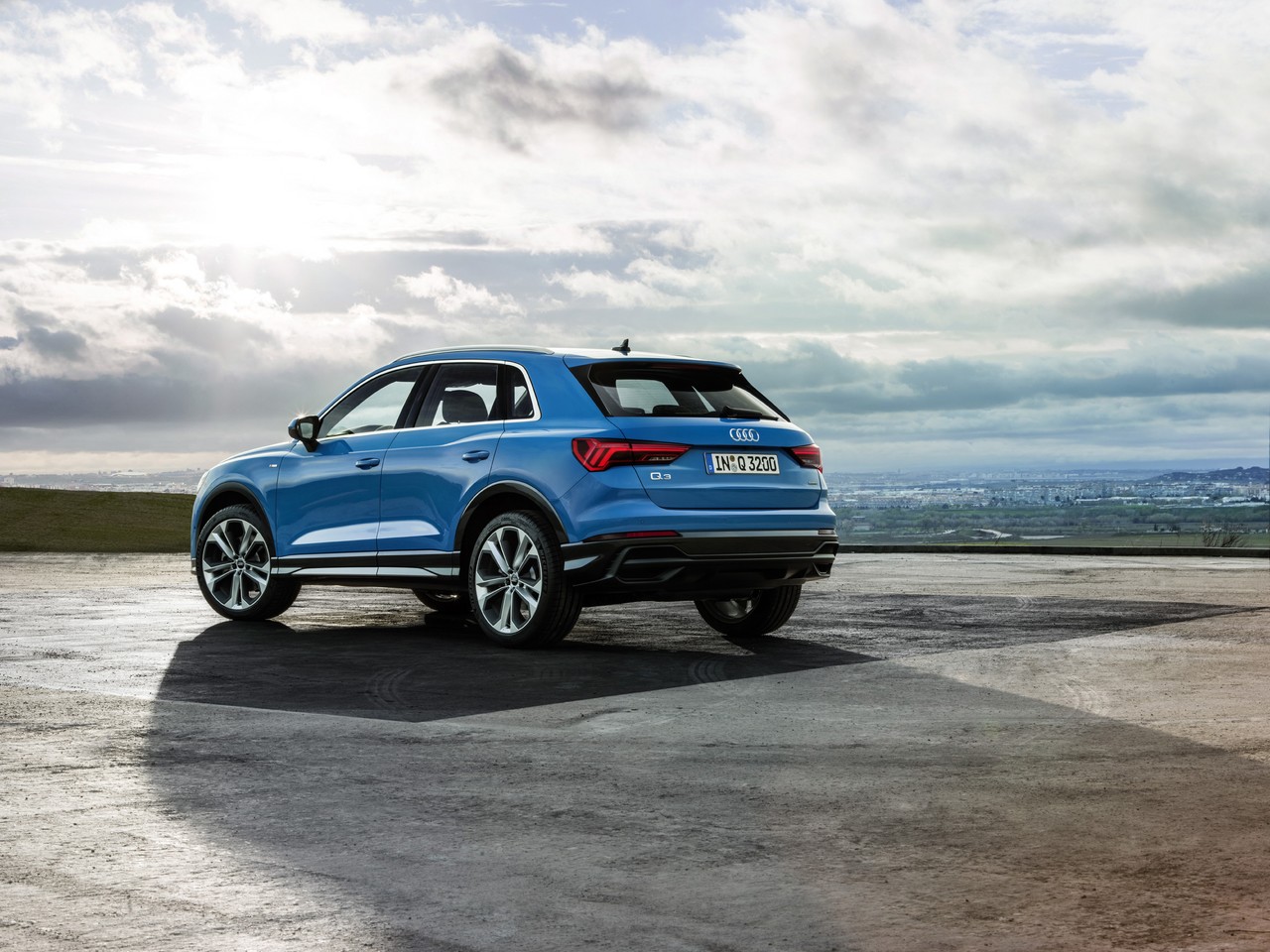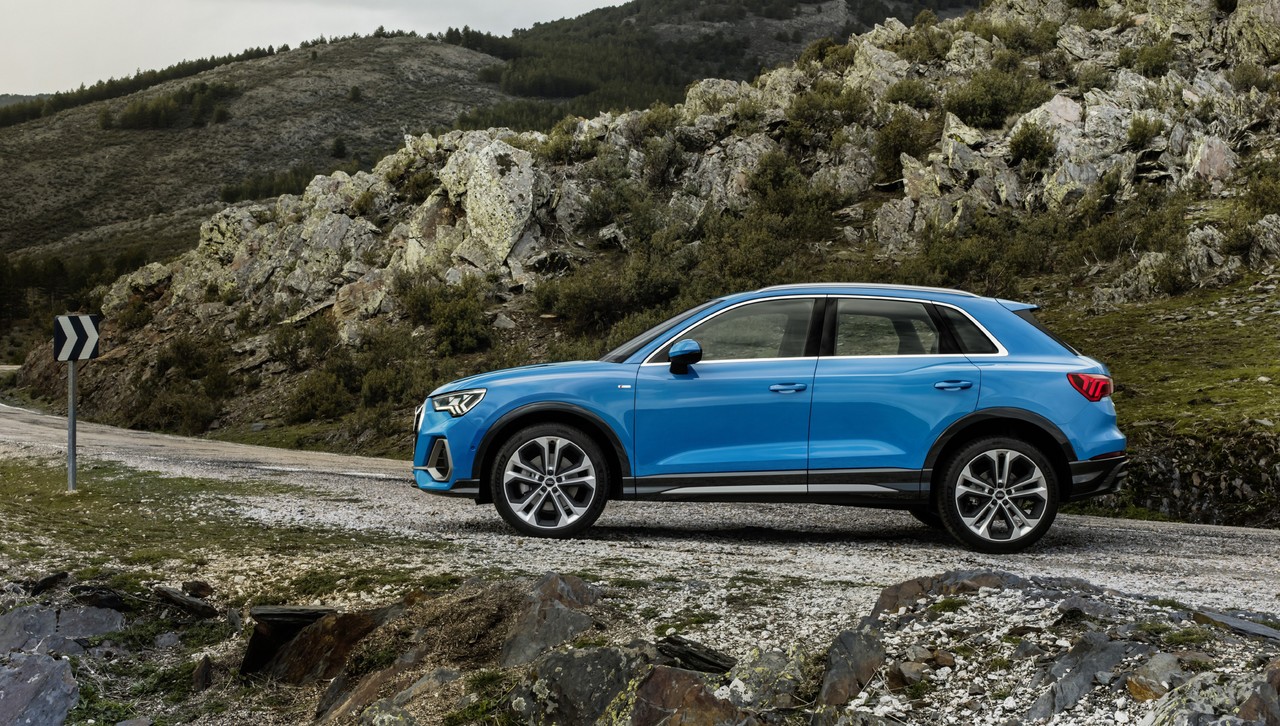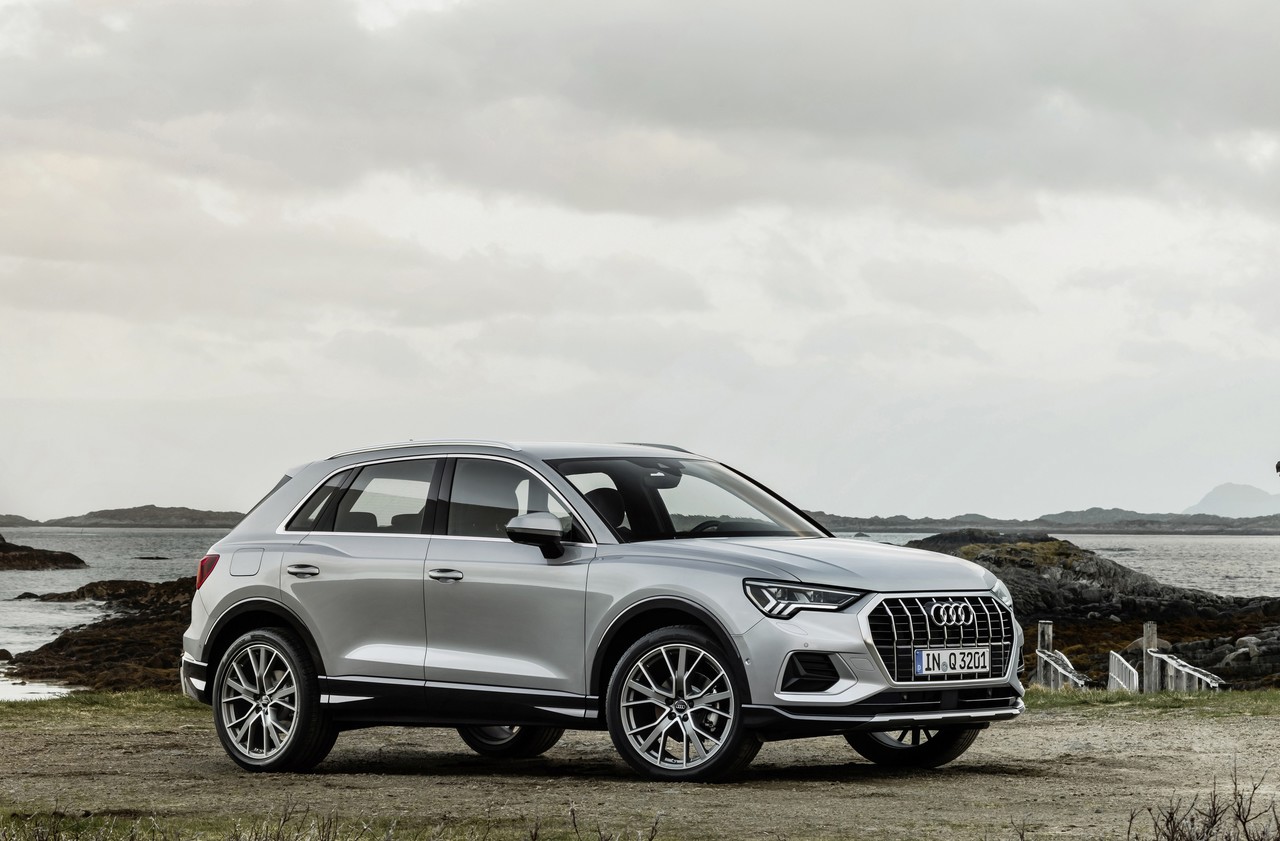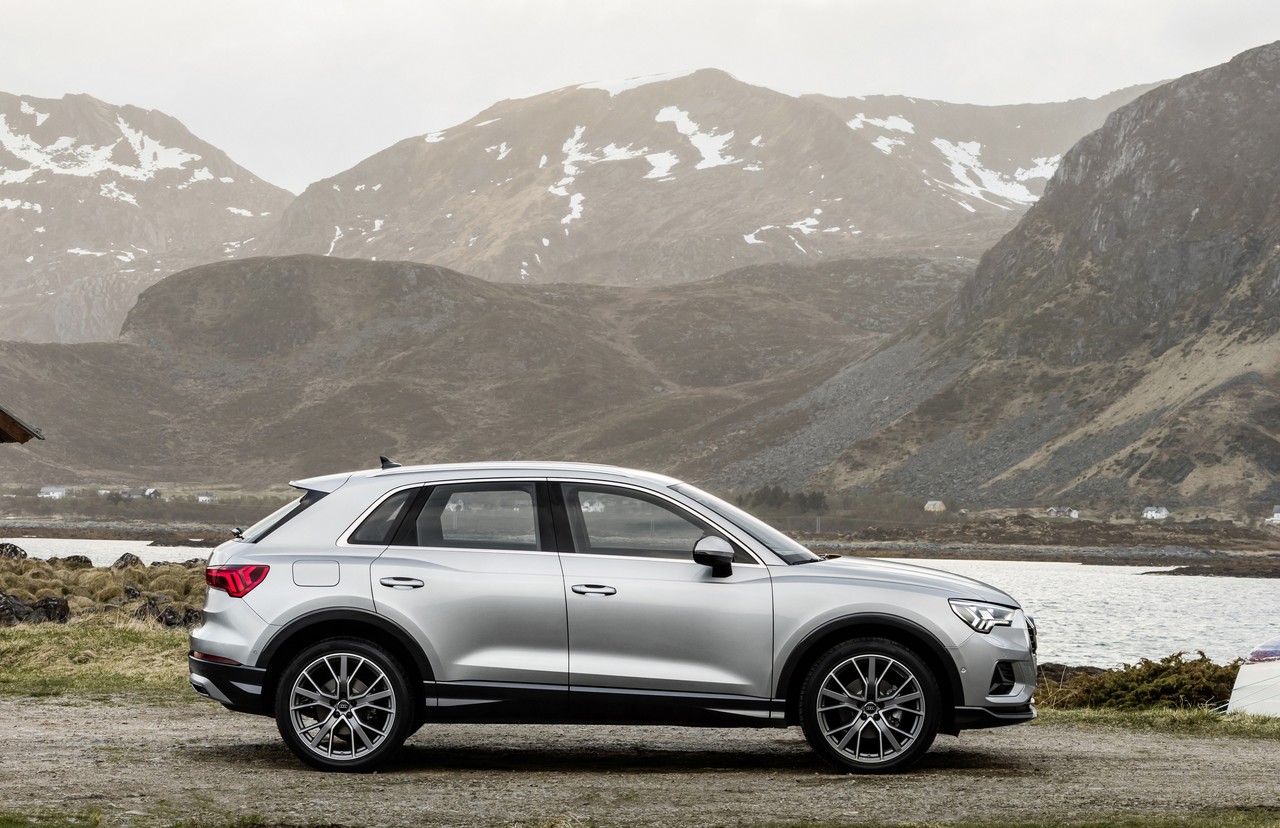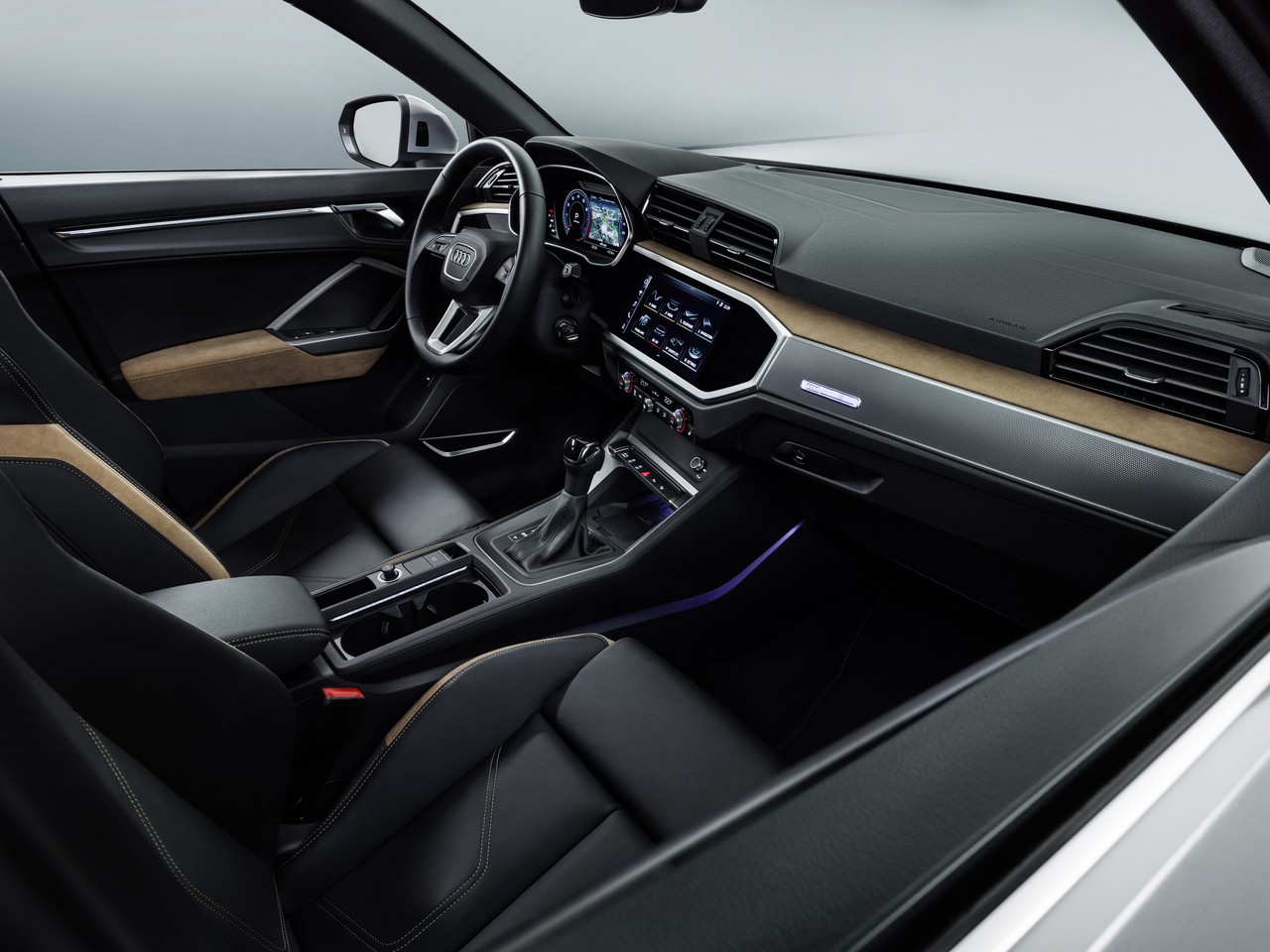
- High standard of interior fit and finish
- Good body control and accurate steering
- Significantly improved interior space relative to Audi 8U Q3
- Large boot
- For 35 TFSI, engine lacks refinement and exhibits turbo lag
- Double clutch transmission eager to upshift and reluctant to downshift
- Ride quality is acceptable, but firm
- Slight delay when operating touchscreen
- Voice recognition (‘natural-language voice control’) doesn’t work as intended
Overview
Released in Australia in October 2019, the Audi F3 Q3 was a compact SUV. Manufactured in Gyor, Hungary, the Audi F3 Q3 range for Australia initially consisted of the front-wheel drive 35 TFSI variant, though other variants will follow in the first half of 2010 (including quattro variants).
Haldex 5 all-wheel drive (‘quattro’)The Audi F3 Q3 quattro had a fifth-generation Haldex all-wheel drive system which utilised an electronically controlled and hydraulically actuated multi-plate clutch that was located in front of the rear axle differential (at the end of the prop shaft). If there was a loss of front-wheel traction, or such a loss was anticipated by on-board sensors, the clutch would engage to transfer torque to the rear axle ‘in just a few milliseconds’ for a 50:50 front:rear torque split. As a result of software which determined the parameters for engagement of the multi-plate clutch, the all-wheel drive system had three selectable modes:
Body and dimensionsThe second-generation Audi Q3 F3 was underpinned by Volkswagen AG’s MQB platform. Compared to the Audi 8U Q3 , the Audi F3 Q3 was 97 mm longer (at 4484 mm), 25 mm wider (1856 mm), 26 mm taller (1616 mm) and had a 77 mm longer wheelbase (2680 mm). Luggage capacity for the Audi Q3 was 530 litres (previously 420 litres) and the cargo floor could be adjusted to three different heights. Suspension and steeringThe Audi F3 Q3 had MacPherson strut front suspension and four-link rear suspension. As an extra-cost option ($2000 at launch), the Audi F3 Q3 could be specified with electronically controlled dampers that could vary damping response according to the drive mode selected and driving conditions. The Audi Q3 had rack-and-pinion steering with electric power assistance; its turning circle was 11.8 metres. The Audi Q3 could also be specified with ‘progressive steering’ whereby the steering ratio became more direct as steering angle increased. Safety equipmentStandard safety equipment for the Audi Q3 included dual front airbags, front seat-mounted side airbags, full-length curtain airbags (i.e. for front and rear occupants), ABS, electronic brake force distribution, brake assist, electronic stability control, traction control and front seatbelts with pre-tensioners and load limiters. For Australian delivered vehicles, the Audi F3 Q3 was equipped with the following active safety technologies as standard –
Euro NCAP testing: Audi F3 Q3In Euro NCAP testing , the Audi F3 Q3 received a five star safety rating which included a 95 per cent adult occupant protection rating and an 86 per cent child occupant protection rating. In the frontal offset test, protection of the driver’s head, thighs and feet were rated as good, though chest and lower leg protection was rated as adequate (i.e. a slight risk of serious injury). In the side impact and pole tests, however, maximum points were awarded. Wheels, tyres and brakesThe Audi Q3 35 TFSI had 7.0J x 18-inch alloy wheels with 235/55 R18 tyres. Furthermore, the Q3 35 TFSI had 312 mm by 25 mm ventilated front brake discs and 300 mm by 12 mm solid rear discs. The Audi Q3 35 TFSI Launch Edition was fitted with 7.0J x 19-inch alloy wheels with 235/50 R19 tyres. Features: Audi F3 Q3 35 TFSIThe infotainment system for the Audi F3 Q3 consisted of –
Beyond this, standard features for the Audi F3 Q3 35 TFSI included leather-appointed upholstery, dual-zone climate control air conditioning, cruise control with speed limiter, adaptive LED headlights with daytime running lights, dusk-sensing headlights, rain-sensing wipers, ‘Audi parking system plus’ (front and rear parking sensors, and a rear view camera and visual display), 40:20:40 split folding rear seats, a leather-wrapped steering wheel, proximity key (i.e. keyless entry), power adjustable door mirrors, power windows, tilt and telescopic steering wheel adjustment, push-button start, power-operated tailgate with gesture control for hands-free opening, roof rails, tyre pressure loss indicator, floor mats, a trip computer and immobiliser. 2019 Audi Q3 35 TFSI Launch EditionThe Audi Q3 35 TFSI Launch Edition was released in Australia in October 2019 to coincide with the launch of the Audi F3 Q3. The Q3 35 TFSI Launch Edition could be identified by its black exterior styling package which consisted of black highlights for the front grille, side window trim strips, front and rear bumpers, roof rails and door mirrors. Compared to the standard Q3 35 TFSI, the Launch Edition was equipped with a ‘Comfort Package’ which included power adjustable front seats (with adjustable lumbar support), heated front seats, power folding and heated door mirrors with a kerb-side function on the passenger side, an auto-dimming interior mirror and Adaptive Cruise Control with stop & go function and emergency assist. Specifically,
The Comfort Package was available as a $2600 extra-cost option for the standard Audi Q3 35 TFSI. Beyond this, standard features for the Q3 35 TFSI Launch Edition were extended to include 180 watt audio system with ten speakers (including subwoofer) and a six-channel amplifiers, LED interior ambient lighting and rear privacy glass. The Audi Q3 35 TFSI Launch Edition was also fitted with a 360 degree surround view camera system which used four wide-angle cameras to provide a virtual top view, reversing camera view, panorama view for front and rear, and kerb-side view. Specifications
Back To Top
|
